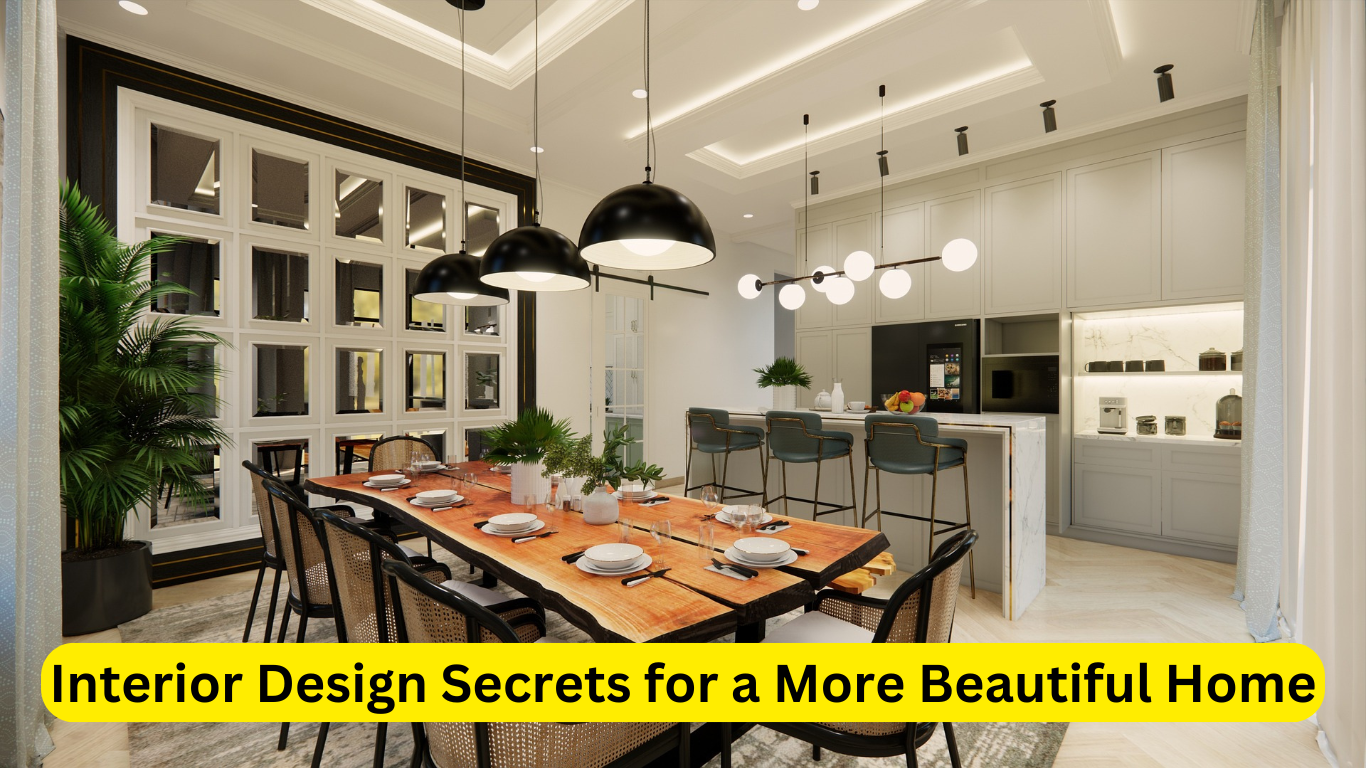Interior Design Want to turn your house into a stunning sanctuary? Interior design is more than just aesthetics—it’s about creating a space that feels like home. Whether you live in a sprawling villa or a cozy apartment, thoughtful design can elevate your living experience. Ready to unlock the secrets? Let’s dive in!
Assessing Your Space
Before jumping into color swatches and furniture catalogs, take a moment to evaluate your home. Every space has its quirks—embrace them!
- Identify Strengths and Limitations
Do you have high ceilings or large windows? Leverage these features to make your home stand out. Working with a smaller room? No worries, there are plenty of tricks to make it feel spacious. - Find Your Home’s Unique Style
Are you drawn to sleek modern vibes, or do you prefer a rustic farmhouse aesthetic? Identifying your preferred style ensures consistency throughout your design journey.
Lighting: The Key to Atmosphere
Lighting can make or break a room. Here’s how to master it:
- Let the Natural Light In
Pull back heavy curtains and use sheer fabrics to brighten your space. Sunlight not only enhances your home’s beauty but also lifts your mood. - Layer Artificial Light
Combine overhead lighting with table lamps and floor lamps for a cozy and functional atmosphere. Don’t forget dimmers—they’re a game-changer for creating different moods.
Color Choices That Transform Spaces
Color is powerful—it can energize, soothe, or even make a room feel larger.
- Understand the Psychology of Colors
Cool tones like blues and greens create calmness, while warm tones like reds and yellows add energy. - Mix Neutrals with Bold Accents
Use neutral colors for walls and larger furniture, then sprinkle in bold hues with cushions, throws, or art.
Furniture Placement Made Easy
Arranging furniture isn’t just about aesthetics; it’s about creating a functional flow.
- Optimize Flow and Functionality
Arrange furniture to encourage conversation and easy movement. Avoid blocking pathways. - Go Multi-Purpose
Invest in furniture that does double duty, like ottomans with storage or foldable dining tables—especially useful for compact homes.
Textures and Layers: Adding Depth
Textures bring life to a room. Without them, even the most stylish spaces can feel flat.
- Mix Materials
Pair smooth surfaces like glass or metal with softer materials like wood or fabric to create balance. - Layer Up
Use rugs, throws, and cushions to add warmth and comfort. Bonus: They’re easy to switch out when you want a fresh look.
Artwork and Décor as Focal Points
Art isn’t just for museums—it’s for your home, too!
- Choose Statement Pieces
Opt for bold, eye-catching items that reflect your personality. - Placement Matters
Hang artwork at eye level and consider symmetry for a polished look.
Maximizing Small Spaces
Small spaces can be big on style with these tips:
- Think Vertical
Use wall-mounted shelves to save floor space. - Create Illusions
Mirrors are your best friend—they make any room look larger and brighter.
The Magic of Greenery
Plants are the unsung heroes of interior design.
- Why Go Green?
Indoor plants improve air quality and bring a sense of calm. - Low-Maintenance Options
Try succulents or snake plants—they’re nearly impossible to kill.
Personalizing Your Space
Your home should tell your story.
- Display Sentimental Items
Whether it’s travel souvenirs or family photos, these pieces add a personal touch. - Curate, Don’t Clutter
Avoid overcrowding surfaces. A few meaningful items are better than a dozen random ones.
The Role of Technology in Modern Design
Smart homes are no longer a thing of the future—they’re here!
- Integrate Smart Tech
From voice-controlled lights to automated blinds, tech can make your life easier and your home sleeker. - Choose Tech-Friendly Furniture
Look for furniture with built-in charging ports or hidden storage for cables.
Flooring and Wall Treatments
Your walls and floors set the stage for your design.
- Flooring That Complements
Choose materials that align with your home’s aesthetic—hardwood for warmth, tiles for a modern touch. - Make a Statement with Walls
Bold wallpaper or a fresh coat of paint can completely transform a room.
Creating Zones in Open-Plan Homes
Open-plan living can be tricky to navigate.
- Define Spaces with Rugs
Use rugs to visually separate areas like dining and lounging. - Shelving as Dividers
Open shelving units can act as partitions without blocking light.
Budget-Friendly Design Hacks
Who says you need a fortune to redesign your home?
- Repurpose What You Have
Old furniture can look brand new with a coat of paint or new upholstery. - DIY Décor
Create your own art or craft decorations to save money and add personality.
Conclusion
Transforming your home into a beautiful haven doesn’t have to be overwhelming. By focusing on lighting, colors, textures, and personal touches, you can create a space that reflects your style and brings you joy. Start small, experiment, and let your creativity shine!
FAQs
- What are the most important elements of interior design?
Lighting, color, and furniture placement are key elements to consider. - How can I make a small room look bigger?
Use mirrors, light colors, and multi-functional furniture to create the illusion of space. - What’s the easiest way to update a room on a budget?
Rearrange furniture, add fresh cushions, and incorporate DIY décor. - What kind of plants are best for indoor spaces?
Low-maintenance plants like succulents, snake plants, and pathos are ideal. - How do I choose a color palette for my home?
Start with neutral tones and add complementary colors as accents.
Please don’t forget to leave a review.
Explore more by joining me on Protips

